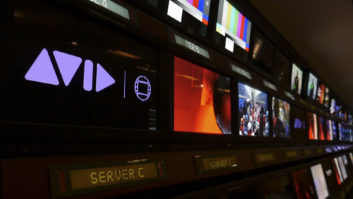As cloud-based workflows become the backbone of content creation, the industry faces a perfect storm of cybersecurity challenges: the migration to distributed cloud environments, the complexity of securing these infrastructures, and the relentless rise in cyber threats. At MovieLabs, we believe the answer lies in a zero trust security architecture, specifically our Common Security Architecture for Production (CSAP), designed to safeguard media workflows while enabling creative freedom.

Traditional perimeter-based security, reliant on firewalls and VPNs, is no longer sufficient in a world where production spans multiple vendors, cloud platforms, and global teams. The assumption that “insiders” are trustworthy, and “outsiders” are threats has been rendered obsolete. “Zero trust” flips this model, assuming every user, device, and service is potentially compromised until proven otherwise. This philosophy underpins CSAP, a framework tailored for media production that ensures security is intrinsic, scalable, and workflow-driven.
CSAP is not just a theoretical construct; it’s a practical, collaboration-oriented architecture. It builds on the zero trust principle that nothing is trusted without authentication, and all activities require explicit authorisation. CSAP is media-specific zero trust architecture, addressing the unique needs of production workflows, whether it’s securing dailies, VFX rendering, or post production assets. It introduces scalable security levels, allowing content owners and production companies to adjust protections based on content sensitivity or risk assessment. This granularity ensures high-value assets, like unreleased films, receive fortress-like security, while less sensitive tasks remain agile.
Our journey toward zero trust began with MovieLabs’ 2030 Vision, a roadmap for cloud-centric, software-defined media production. Published in 2019, it highlighted the need for a security model that protects assets and workflows, not just infrastructure. The white paper, The Evolution of Production Security, outlined some core principles related to security: intrinsic security, cloud-specific protections, resilience on untrusted infrastructure, content owner control, scalability, and adaptability to evolving threats. These principles guide CSAP, ensuring security enhances, rather than hinders, the creative process.
Implementing CSAP starts with the Zero Trust Foundation (ZTF), a baseline model applicable to any industry but customised for media production. CSAP requires robust identity management and authentication, ensuring every participant, human or machine, is verified. Authorisation policies then dictate what authenticated entities can do, enforcing the principle of least privilege. For example, an editor accessing a cloud workstation for dailies must be authenticated, limiting actions to only what’s necessary for their tasks.
The media industry’s collaborative nature makes CSAP’s focus on interoperability critical. Productions often involve dozens of vendors using diverse tools and platforms. Our white paper, Security Interoperability in Media Creation, emphasises seamless security across these ecosystems. By defining clear authentication and authorisation protocols, CSAP enables secure, frictionless collaboration, reducing complexity, a known enemy of security.
MovieLabs has also released 43 recommended practices for deploying zero trust, applicable to any zero trust implementation but optimised for CSAP. These practices, detailed in our ‘Recommended Practices for Deployment of Zero Trust in Media Production’, cover everything from mapping workflows to monitoring activities. For instance, understanding workflows allows studios to define “protect surfaces”, the specific assets and tasks requiring security, making policies precise and manageable.

The urgency of this transition cannot be overstated. Cyberattacks are growing in sophistication, targeting media supply chains to steal unreleased content or disrupt workflows. The 2020 NIST Zero Trust Architecture publication and Google’s BeyondCorp initiative validate zero trust’s efficacy, and CSAP adapts these principles for media’s distributed, multi-vendor reality.
At MovieLabs, we’re not just advocating for change, we’re enabling it. Our CSAP documentation is freely available, and we invite industry feedback at [email protected]. By embracing zero trust, the media industry can secure its cloud future, protect its creative output, and maintain the trust of audiences worldwide. The storm is here, but with CSAP, we’re building a fortress to weather it.







